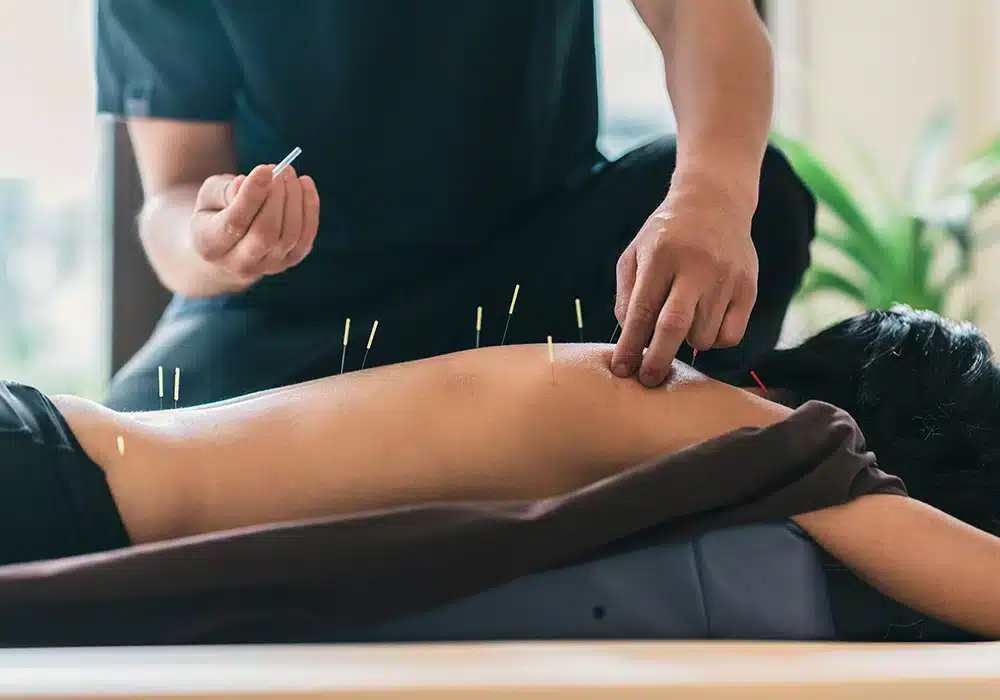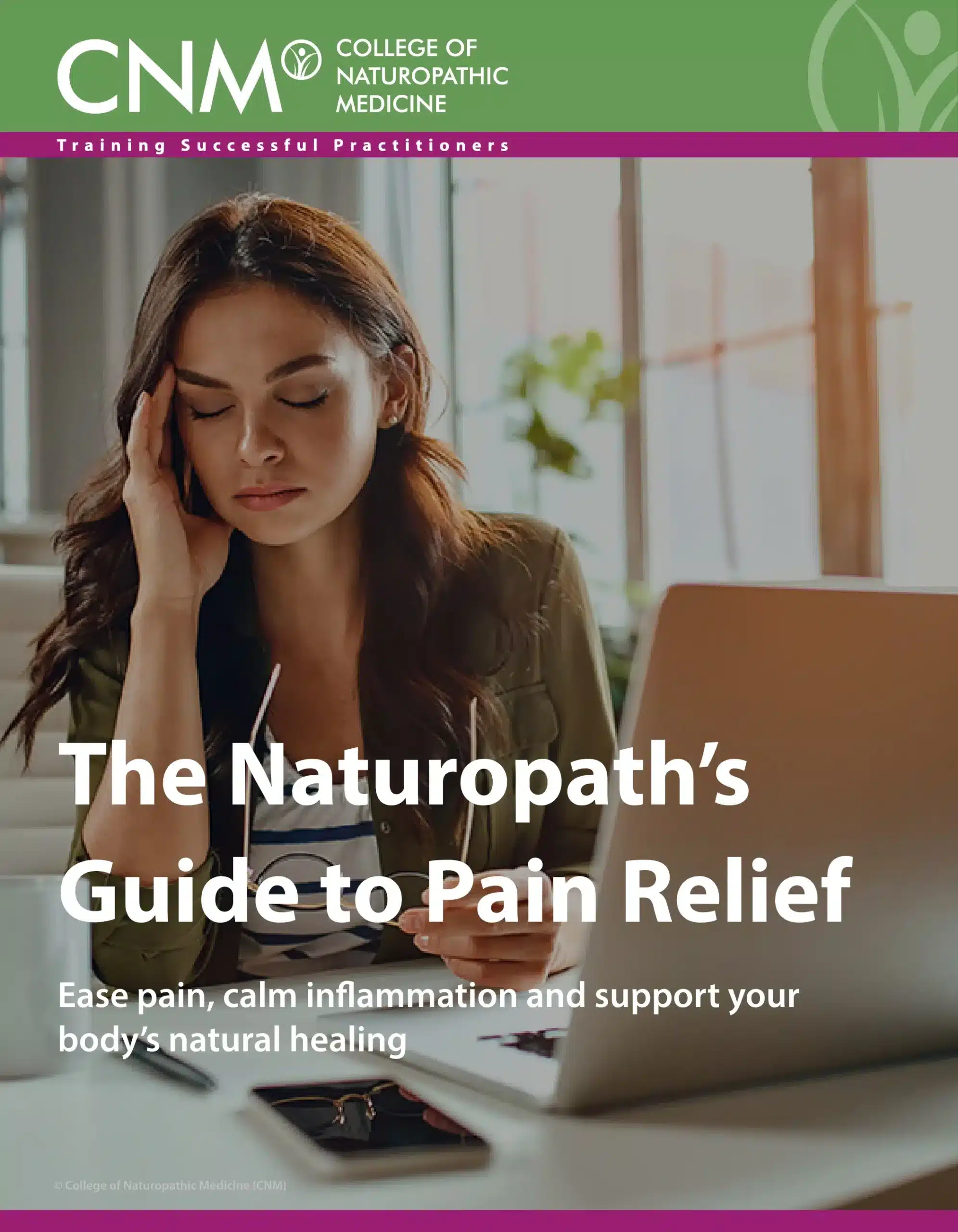Change Career | Improve Your Own Health | Help Others, Explore our CNM Diploma courses
What long-term use is doing to your body
Pain is your body’s built-in alarm system – a signal that something isn’t quite right. Whether it’s a headache, aching joints or period pain, reaching for painkillers may quiet the signal, but it doesn’t solve the problem. Pain can stem from something simple, like a nutritional deficiency, or from a deeper dysfunction that needs investigation.
Painkillers like ibuprofen and paracetamol promise instant relief, but over time, they can do more harm than good. These everyday drugs may temporarily dull pain, but they don’t address why it’s happening, and they interfere with your body’s natural healing processes.
There are safe, natural options that can ease discomfort, calm inflammation and help your body heal itself.
Damaging effects of painkillers
Non-steroidal anti-inflammatory drugs (NSAIDs) such as ibuprofen and aspirin work by blocking enzymes that trigger inflammation and pain. While that may sound helpful, inflammation isn’t always the enemy – it’s part of your body’s repair process. NSAIDs suppress symptoms – they don’t heal, and they come with side effects.
NSAIDs side effects:
- Irritate and damage the stomach lining, leading to ulcers or bleeding.
- Reduce kidney function and increase cardiovascular risk.
- Damage the liver and suppress the immune system.
- Deplete key nutrients like vitamin C, folate and glutathione, making it harder for your body to repair tissue.
- Slow down healing by interfering with the inflammatory cascade your body relies on to repair injury.
Paracetamol also burdens the liver and depletes glutathione, one of the body’s main antioxidants.
All painkillers suppress symptoms rather than addressing the root cause, and stronger painkillers carry a risk of addiction.
Got a health issue you want to resolve? Ready to take charge of your family’s health or explore a career change?

The cause of pain and inflammation
Pain is a message – your body’s way of saying something needs attention. Chronic pain or inflammation often stems from deeper causes such as:
- Poor diet (high in processed foods and omega-6 oils).
- Nutrient deficiencies, especially magnesium, omega-3s and antioxidants.
- Gut imbalance or leaky gut (when the gut lining allows unwanted particles into the bloodstream).
- Chronic stress or poor sleep, which increase inflammatory chemicals like cortisol.
- Hormonal imbalances, including menstrual, thyroid or adrenal issues.
- Environmental toxins, heavy metals or mould
- Immune system dysfunction or chronic infections.
- Structural or musculoskeletal issues, such as posture or past injuries.
The naturopathic approach focuses on identifying and addressing these root causes rather than just silencing symptoms.


How natural therapists uncover the cause of pain
Pain always has a story behind it. Natural therapists specialise in uncovering that story through detailed case-taking and holistic assessment.
During a consultation, they will explore your health history, diet, lifestyle, emotional wellbeing and environmental exposures to piece together what might be driving inflammation or pain. They’ll ask detailed questions to get the full picture of what’s going on in your body.
Alongside thorough case-taking, natural therapists use a combination of traditional diagnostic tools and modern naturopathic testing to identify underlying imbalances:
- Iridology: Examining patterns and colours in the iris that can reflect inflammation or organ stress. For example, thin, dark lines radiating out from the centre of the eye may point to areas of congestion or irritation, such as in the liver or digestive system, while circular rings can suggest long-term stress or tension. Learn how your iris can reveal hidden stress and organ imbalance.
- Nail signs: Your nails can reveal nutrient deficiencies and systemic stress. Vertical ridges may indicate poor protein absorption or low stomach acid, while white spots can suggest zinc deficiency.
- Tongue diagnosis: In Chinese Medicine, the tongue’s colour, coating and shape can reveal health imbalances linked to pain. A pale tongue may indicate low blood or nutrient deficiencies, a red tip can signal stress or tension headaches, and a swollen or puffy tongue can reflect inflammation contributing to muscle or joint aches. Discover what the markings on your tongue mean.
- Facial analysis: The face can reveal a lot about your health. Facial colour, puffiness and tension indicate underlying stress and inflammation: puffiness under the eyes may suggest adrenal or kidney stress, a tight jaw or frown lines can indicate chronic tension, and flushed cheeks or forehead can signal inflammation affecting muscles, joints or menstrual discomfort.
- The Chinese body clock: According to Chinese Medicine, different organs are more active at specific times of day. Symptoms appearing during these times can reveal underlying organ stress: early-morning waking may indicate liver imbalance, afternoon fatigue can reflect digestive strain, and late-night restlessness can signal kidney or adrenal stress. Find out what your body clock is trying to tell you.
- Naturopathic testing: Tests such as stool analysis, hormone and mould panels, nutrient checks and DNA health screenings reveal hidden causes of inflammation, toxicity and deficiencies, helping uncover the root of your pain.
By combining observation with testing, natural therapists aim to find the root cause, not just treat the symptom, helping the body restore balance and heal naturally.


Natural pain remedies that work
Once the cause of pain has been identified, natural therapies can support the body’s healing process and reduce inflammation safely. Here are some effective naturopathic remedies that can he and practices to help ease pain and reduce inflammation:
Turmeric and Boswellia
Two of nature’s most potent anti-inflammatories. Turmeric (curcumin) inhibits inflammatory pathways safely, while Boswellia (frankincense) reduces pain and swelling in joints without harming the stomach
Magnesium
Magnesium relaxes muscles, improves circulation and eases nerve pain. Magnesium glycinate or citrate are well-absorbed forms that also support sleep and stress resilience.
Ginger
This kitchen staple has similar anti-inflammatory effects to ibuprofen but supports digestion instead of damaging it. Fresh ginger tea or capsules can ease menstrual pain, joint discomfort and tension headaches.
Epsom Salt Baths
A simple but powerful remedy. The magnesium sulphate absorbed through the skin helps soothe sore muscles and calm the nervous system.
Castor oil packs
Apply a warm compress with castor oil to ease cramps or joint pain. Download our free guide below to learn how to make a castor oil pack.
Acupuncture
Gentle insertion of fine needles at specific points on the body can help reduce pain and calm inflammation. By stimulating nerves, muscles, and connective tissue, acupuncture encourages the body to release natural pain-relieving chemicals and improve circulation, supporting the body’s own healing processes. Read more about acupuncture for pain.


Incredible results from CNM’s student clinic
Years of pain finally gone!
“I’d been struggling with nagging lower back and hip pain for years. Painkillers dulled it for a few hours, but the stiffness and fatigue always came back, and my stomach started reacting badly to the tablets. At the CNM student clinic, my practitioner used naturopathic tools like tongue and facial analysis, iridology and detailed case-taking to understand what was driving the inflammation and poor recovery.
They recommended omega-3 oils to ease joint stiffness, curcumin with black pepper to target inflammation, and a magnesium-rich Epsom salt bath routine to relax my muscles. I also started using nettle and devil’s claw tea to support circulation and reduce tension. Within a month, I was moving more freely, sleeping better, and haven’t needed painkillers since. I feel stronger and more flexible than I have in years.”
Jade L
Ready to ditch the medicine cabinet?
Say goodbye to stubborn joint pain, muscle soreness and everyday inflammation with remedies from your own kitchen. Download our free Naturopath’s Guide to Pain & Inflammation and start feeling relief without relying on medications.
"*" indicates required fields





